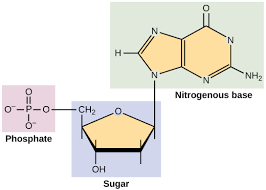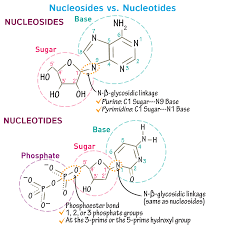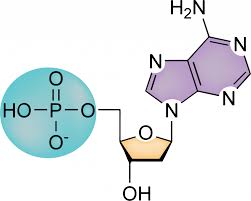Nucleoproteins play a crucial role as primary constituents of chromatin in cell division, reproduction, and the transmission of hereditary factors.
Nucleoproteins and Nucleic Acids in Cellular Functions
Nucleoproteins are essential components of chromatin, participating in cell division, reproduction, and hereditary transmission. These are formed by the combination of simple proteins with nucleic acids, which consist of purine and pyrimidine bases, sugar, and phosphoric acid.
Nucleoproteins constitute a significant portion of nuclear material and are also present in the cytoplasm, contributing to vital cellular organization and function.
Read Also: Worm Infestation on Ruminant Animals: Symptoms and Treatment
Structure and Components of Nucleic Acids

Nucleic acids are high molecular weight compounds that serve as the storehouse of genetic information and facilitate protein synthesis.
Upon hydrolysis, nucleic acids yield basic nitrogenous compounds, including purines and pyrimidines, a pentose sugar (ribose or deoxyribose), and phosphoric acid.
The primary pyrimidines found in nucleic acids are cytosine, thymine, and uracil, while the principal purine bases are adenine and guanine.
Read Also: Goat Milk Production Complete Guide
Structure of Nucleosides and Nucleotides

Nucleosides consist of a purine or pyrimidine base linked to either D-ribose or D-2-deoxyribose through a P-N-glycoside linkage. In purine nucleosides, this linkage occurs at position 9, while in pyrimidine nucleosides, it occurs at position 1.
When a phosphate group is attached to a nucleoside, it forms a nucleotide. The phosphate group is typically attached in an ester linkage to the 5′-hydroxyl or sometimes the 3′-hydroxyl of ribose.
Functions of Nucleotides
Nucleotides play a vital role in cellular metabolism and biological energy transfer. ATP serves as the primary energy carrier, driving chemical reactions and mechanical functions in cells. Different nucleotides act as carriers and activators in biosynthesis reactions. For example:
1. Adenosine Triphosphate (ATP): Powers cellular functions by interconversion with ADP and inorganic phosphate (Pi).
2. Uridine Trinucleotide (UDP-sugars): Involved in glycogen synthesis, galactose metabolism, and bilirubin metabolism.
3. NAD+, NADP+, and FAD: Serve as coenzymes in electron transfer reactions essential for cellular respiration and energy production.
DNA and RNA in Genetic Information Transfer
Deoxyribonucleic Acid (DNA) consists of a double-helix structure composed of deoxyribose, phosphate groups, and nitrogenous bases.
The bases pair specifically adenine with thymine and cytosine with guanine through hydrogen bonds, encoding genetic instructions for cellular functions. DNA is found in the nuclei of cells and forms part of the chromosome structure.
Ribonucleic Acid (RNA) differs from DNA by containing ribose instead of deoxyribose and uracil instead of thymine. RNA exists in various forms, including messenger RNA (mRNA), ribosomal RNA (rRNA), and transfer RNA (tRNA), each playing a crucial role in protein synthesis.
Do you have any questions, suggestions, or contributions? If so, please feel free to use the comment box below to share your thoughts. We also encourage you to kindly share this information with others who might benefit from it. Since we can’t reach everyone at once, we truly appreciate your help in spreading the word. Thank you so much for your support and for sharing!






